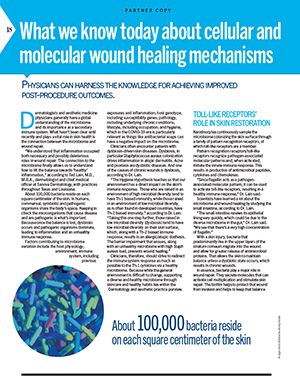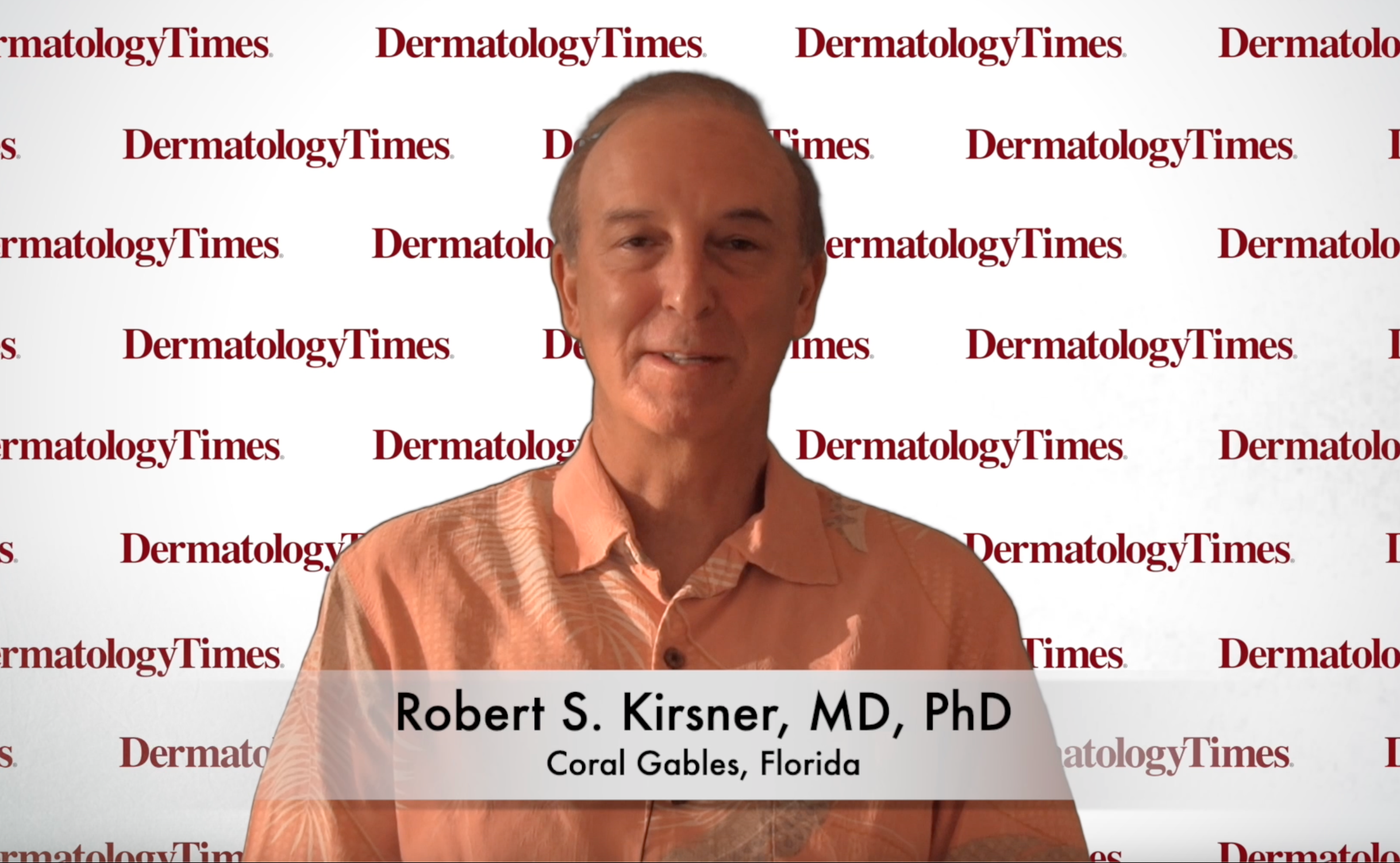- Acne
- Actinic Keratosis
- Aesthetics
- Alopecia
- Atopic Dermatitis
- Buy-and-Bill
- COVID-19
- Case-Based Roundtable
- Chronic Hand Eczema
- Chronic Spontaneous Urticaria
- Drug Watch
- Eczema
- General Dermatology
- Hidradenitis Suppurativa
- Melasma
- NP and PA
- Pediatric Dermatology
- Pigmentary Disorders
- Practice Management
- Precision Medicine and Biologics
- Prurigo Nodularis
- Psoriasis
- Psoriatic Arthritis
- Rare Disease
- Rosacea
- Skin Cancer
- Vitiligo
- Wound Care
Article
What we know today about cellular and molecular wound healing mechanisms
Research is clarifying the vital connection between the microbiome and wound repair. Dysbiosis drives inflammation in atopic dermatitis, acne and psoriasis. Dysbiosis is also one cause of chronic wounds.
Physicians can harness the knowledge for achieving improved post-procedure outcomes.
Dermatologists and aesthetic medicine physicians generally have a global understanding of the microbiome and its importance as a secondary immune system. What hasn’t been clear until recently and plays a vital role in skin health is the connection between the microbiome and wound repair.
“We understood that inflammation occupied both necessary and possibly deleterious roles in wound repair. The connection to the microbiome finally allows us to understand how to tilt the balance towards ‘healthy’ inflammation,” according to Ted Lain, M.D., M.B.A., dermatologist and chief medical officer at Sanova Dermatology, with practices throughout Texas and Louisiana.
About 100,000 bacteria reside on each square centimeter of the skin. In humans, commensal, symbiotic and pathogenic organisms share the body’s space. Keeping in check the microorganisms that cause disease and are pathogenic is what’s important. Because once the balance is lost, dysbiosis occurs and pathogenic organisms dominate, leading to inflammation and an unhealthy immune response.
Factors contributing to microbiome variation include the host physiology; environment; immune system, including previous exposures and inflammation; host genotype, including susceptibility genes; pathology, including underlying chronic conditions; lifestyle, including occupation; and hygiene, which in the COVID-19 era is particularly relevant as things like antibacterial soaps can have a negative impact on the microbiome.
Clinicians often encounter patients with dysbiosis-driven skin diseases. Dysbiosis, in particular, Staphylococcus aureus colonization drives inflammation in atopic dermatitis. Acne and psoriasis are dysbiotic diseases. And one of the causes of chronic wounds is dysbiosis, according to Dr. Lain.
“The Hygiene Hypothesis teaches us that our environment has a direct impact on the skin’s immune response. Those who are raised in an environment of high microbial diversity tend to have Th-1 biased immunity, while those raised in an environment of low microbial diversity, as is often found in developed countries, have Th-2 biased immunity,” according to Dr. Lain. “Taking this one step further, those raised in low microbial diversity (dysbiosis) tend to have low microbial diversity on their skin surface, which, along with a Th-2 biased immune response, results in an allergic/atopic diathesis. The barrier impairment that ensues, along with an unhealthy microbiome with high Staph aureus load, prevents wound healing.”
Clinicians, therefore, should strive to redirect the immune system response as much as possible to the Th-1 cytokines via a healthy microbiome. Because while the general environment is difficult to change, supporting a diverse and healthy microbiome through skincare and healthy habits lies within the Dermatology and aesthetic practice purview.
TOLL-LIKE RECEPTORS’ ROLE IN SKIN RESTORATION
Keratinocytes continuously sample the microbiome colonizing the skin surface through a family of pattern recognition receptors, of which toll-like receptors are a member.
Pattern recognition receptors/toll-like receptors recognize pathogen-associated molecular patterns and, when activated, initiate the innate immune response. This results in production of antimicrobial peptides, cytokines and chemokines.
“Since flagellin acts as a pathogen-associated molecular pattern, it can be used to activate toll-like receptors, resulting in a healthy immune response,” Dr. Lain said.
Scientists have learned a lot about the microbiome and wound healing by studying the small intestine, according to Dr. Lain.
“The small intestine renews its epithelial lining very quickly, which could be due to the diverse microbiome in the gut,” Dr. Lain said. “We see that there’s a very high concentration of flagellin.”
With a skin injury, bacteria that predominantly live in the upper layers of the stratum corneum migrate into the wound and allow for greater release of antimicrobial proteins. That allows the skin to maintain balance unless a dysbiotic state occurs, which results in chronic wounds.
In essence, bacteria play a major role in wound repair. They secrete molecules that can activate cell multiplication and stimulate skin repair. The biofilm helps to protect that wound from invasion and helps to keep that balance between symbiotic and pathogenic bacteria, according to Dr. Lain.
By understanding the molecular and immunologic underpinnings of the interplay between the microbiome and keratinocytes, clinicians can hasten wound repair by taking advantage of certain pathways to direct a healthy and supportive microbiome, as well as a reparative immune response, he said.
PUTTING THE INFORMATION TO PRACTICE
Dr. Lain recommends patients use a topical cosmetic product by Eau Thermale Avène, Cicalfate+ Restorative Protective Cream.
“Cicalfate+ Restorative Protective Cream is a recovery cream that helps support the skin microbiome. These properties make it an excellent choice for post-procedure (medical and aesthetic) and skin requiring recovery due to common irritants,” he said.
Key ingredients in Cicalfate+ Restorative Protective Cream have properties that aid in skin recovery and influence keratinocyte migration.
“Dermatologists understand how important it is to activate these pattern recognition receptors during skin recovery because they will establish the skin recovery response to remove debris and cause keratinocyte migration,” he said. “Now, it’s clear how the microbiome is so incredibly important in the skin recovery response.”
Newsletter
Like what you’re reading? Subscribe to Dermatology Times for weekly updates on therapies, innovations, and real-world practice tips.









